Ocean County Soil Conservation District‘s Sustainable Practice’s for Aquaculture Resources Conservation project (SPARC) continues efforts to provide technical assistance to aquaculture farmers in the Barnegat Bay watershed to further develop the conservation practices of the NJ NRCS Aquaculture Initiative. Under the direction of District Director, Christine Raabe, earlier this year Kristin Adams, Erosion Control Specialist, joined Dale Parsons Jr., owner of Parsons Seafood and Parsons Mariculture in Tuckerton, NJ as he and his crew deployed recycled oyster, surf clam and whelk shell on one of his shellfish leases in the Great Bay.
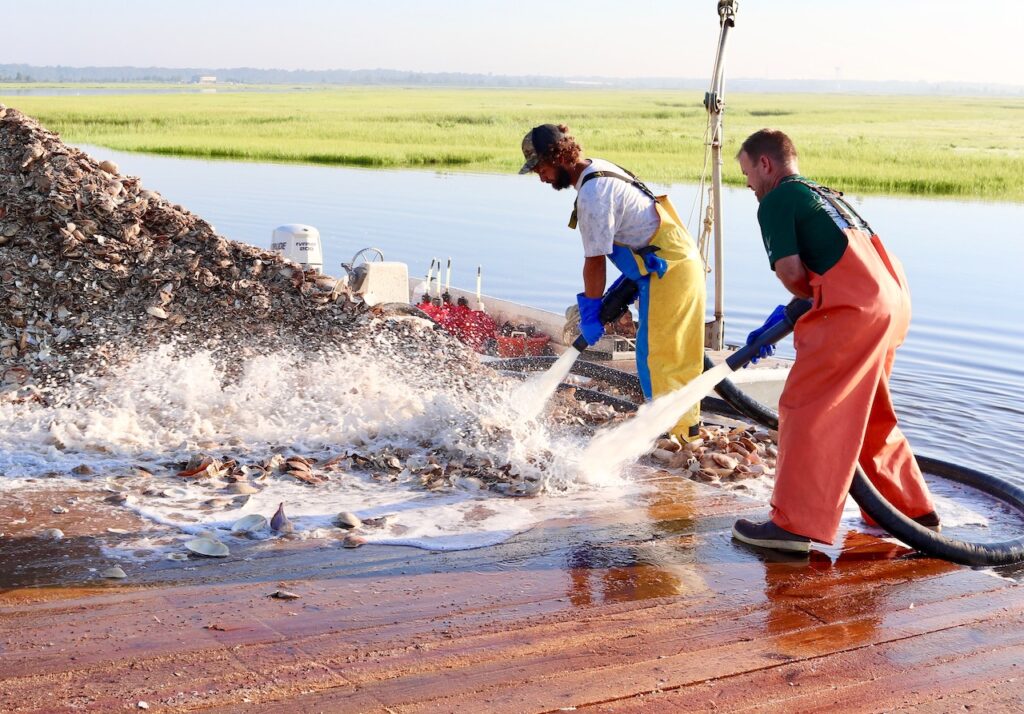
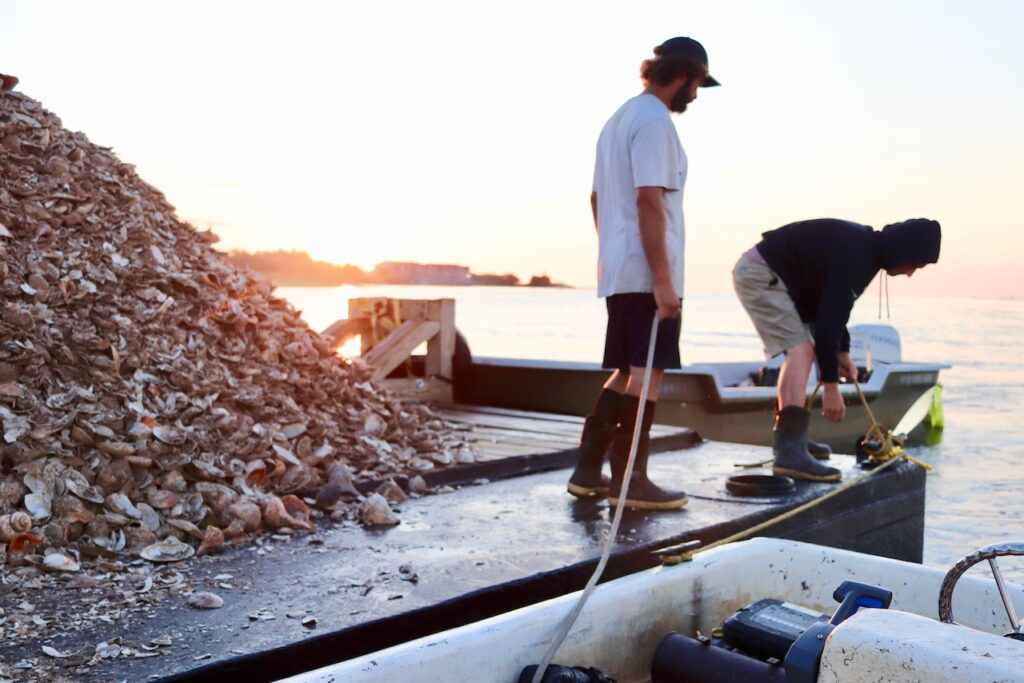
Dale is a participating producer in the USDA Natural Resources Conservation Service’s (NRCS) Environmental Quality Incentives Program (EQIP). This program provides financial and technical assistance to agricultural producers to address natural resource concerns and deliver environmental benefits such as improved water quality, reduced soil erosion and sedimentation, and improved or created wildlife habitat.
Dale and his crew, Mike Joannides Jr., Steve Bongard and Anthony Riccardo implemented a conservation practice called Restoration of Rare or Declining Natural Communities for Oyster Bed Restoration or Enhancement/Replenishment, in which a 2-inch layer of shell is deployed on Dale’s leases to create an oyster reef.
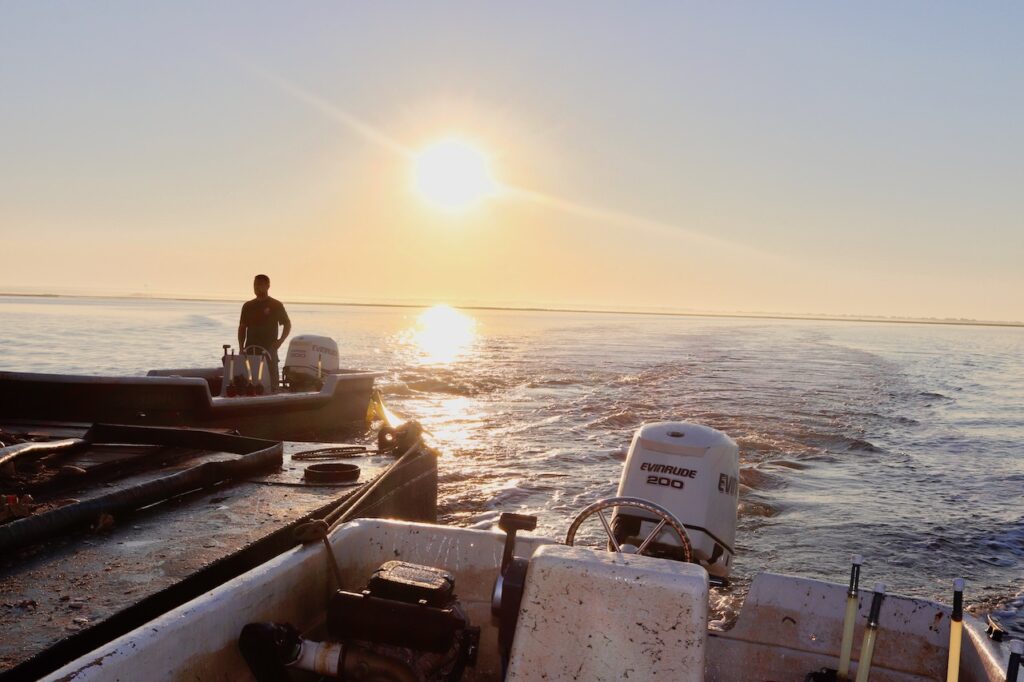
Recycled oyster, surf clam and whelk shell is loaded onto a barge using an excavator; the barge is then pushed to Dale’s lease site using two Carolina Skiff boats. The best conditions for doing so include a high tide and minimal wind. Once the lease site is reached, high pressure hoses are hooked up to pumps within the boats.
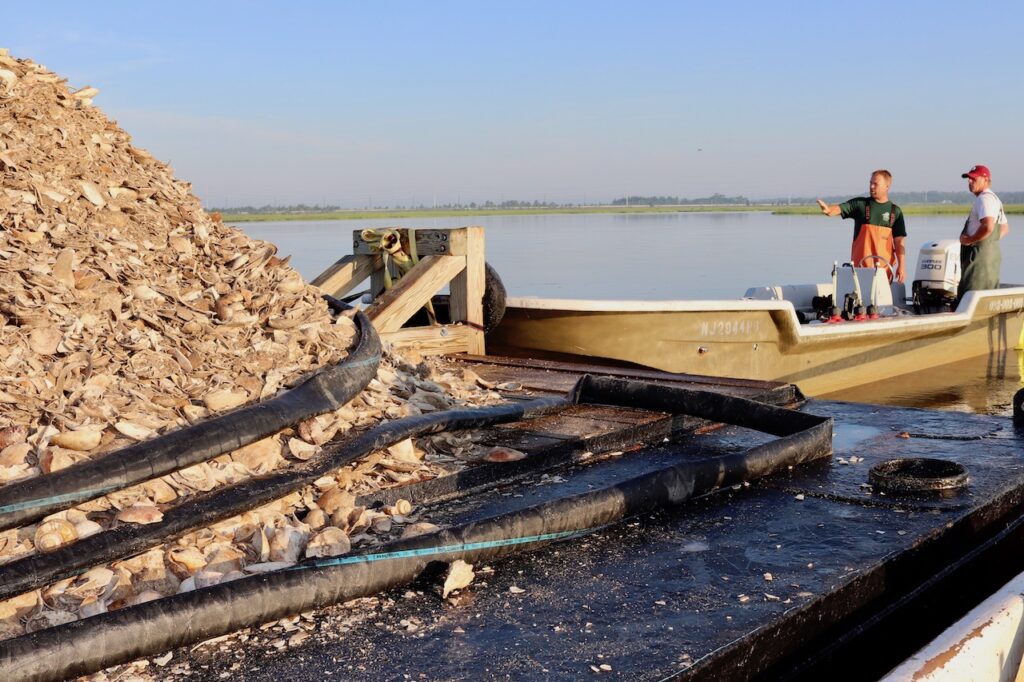
The high pressure hoses are used to physically move all of the recycled shell off the barge and into the bay, where it will settle to the bottom and create a reef. The whole operation, including the massive barge and two Carolina Skiffs, must be constantly moving around the 1.5 acre lease, working with the tide and wind to allow for an even coverage of shell on the lease bottom.
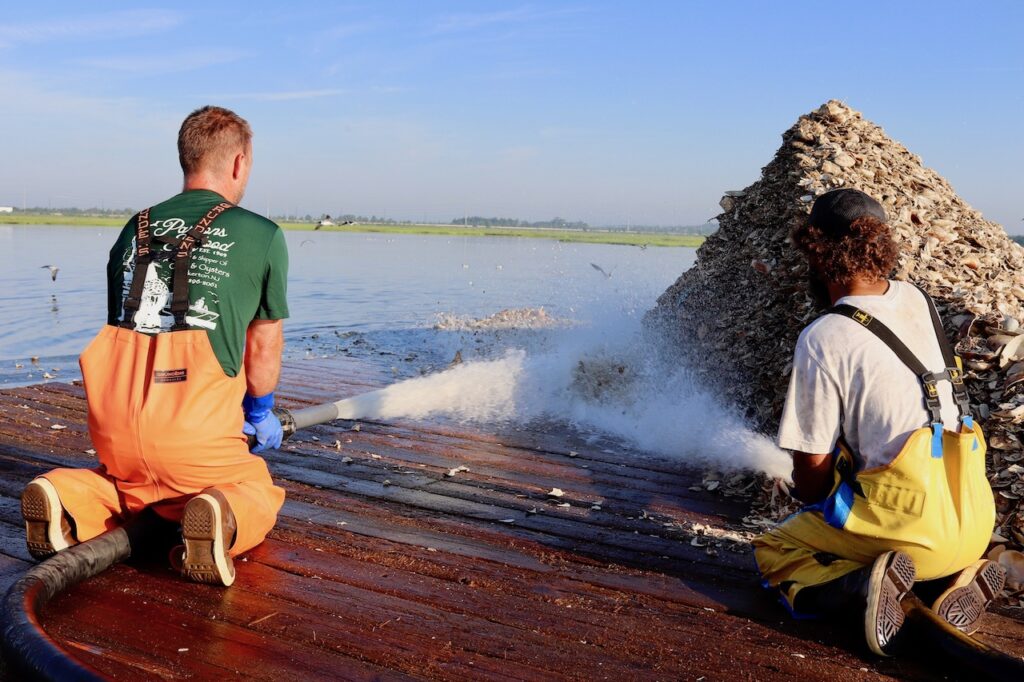
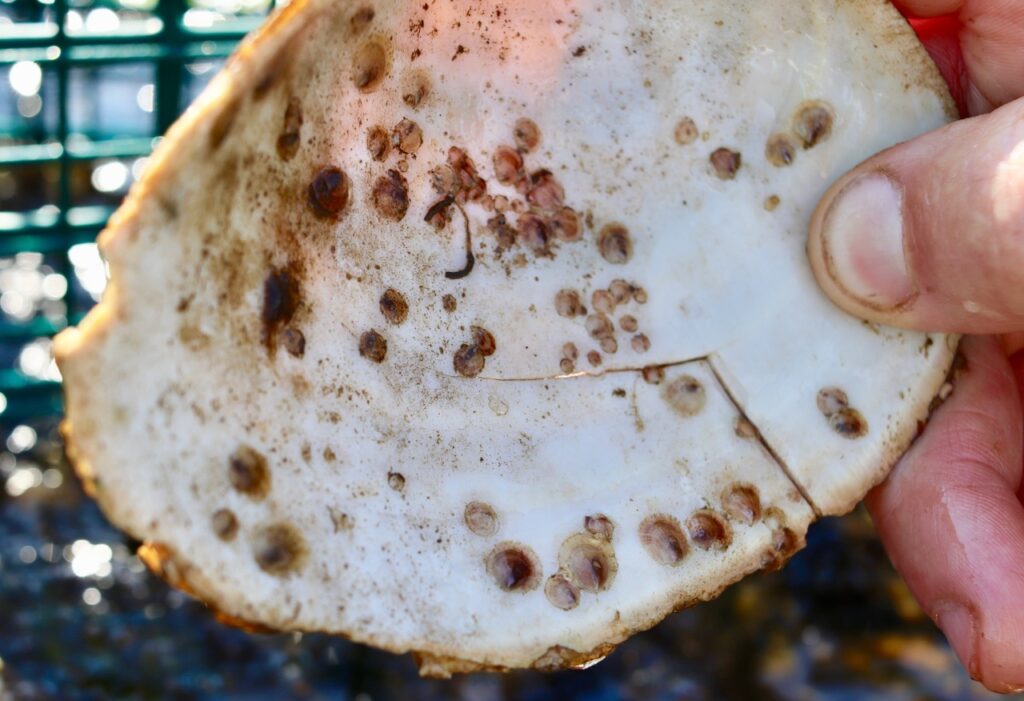
A layer of spat-on-shell will later be placed on top of the oyster reef to promote natural reproduction of oysters. Pictured left, is live oyster larvae which has set onto recycled shell (spat-on shell) in large setting tanks.
Once completed, the restored oyster bed will support oyster growth and reproduction, provide habitat for other aquatic species and enhance water quality through oyster water filtration and the removal of nutrients and suspended sediments.
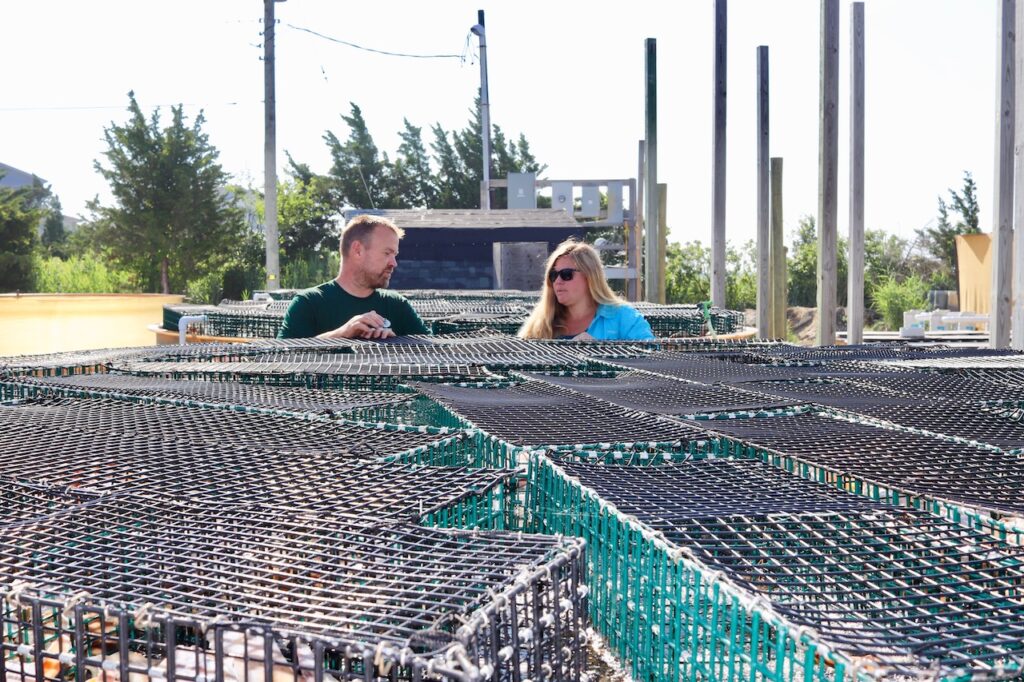
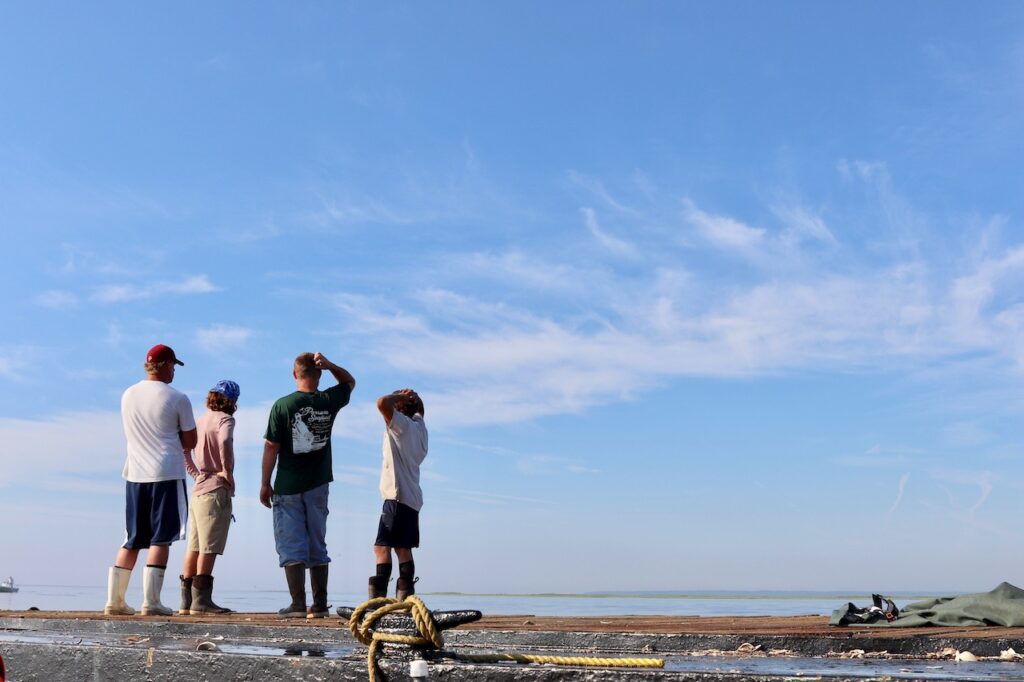
Through the District’s partnership with NRCS, the Aquaculture Initiative and the Sustainable Practices for Aquaculture Resources Conservation (SPARC) project, and the National Association of Conservation Districts’ Technical Assistance grants, Kristin assisted with the conservation plan for Dale’s EQIP application as well as the certification process as the conservation practice was being implemented. The District looks forward to working with NRCS and local aquaculture producers such as Dale in the future as we continue to expand opportunities for shellfish producers and improve the health of the Barnegat and Great Bay estuaries and ecosystems. For more information about SPARC, please visit OCSCD’s SPARC webpage. Click to download a pdf copy of this article. (photos and text by Kristin Adams, PSM, Erosion Control Specialist, Ocean County Soil Conservation District)
